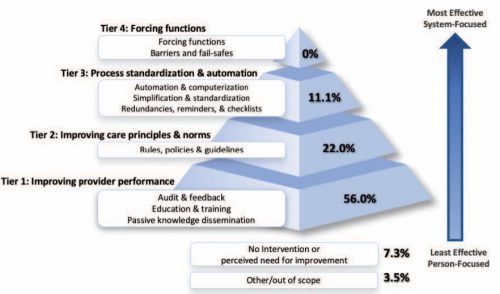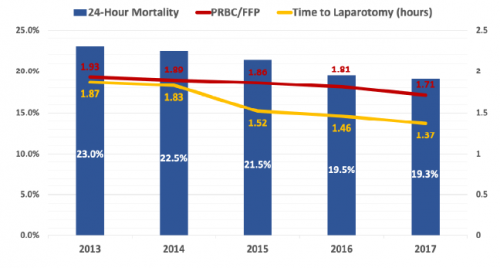The mainstays of rib fracture management are pain control and pulmonary toilet. The pain part of the equation can be managed in many ways, using topical, oral, IV, and injectable medications.
Rib blocks have been a mainstay for achieving some degree of local pain control. Classically, xylocaine was injected in the area around the costal nerve at or proximal to the fracture site. Then we found that if we combined the anesthetic agent with epinephrine, we could prolong the effect. New, longer-acting agents came around, and we could achieve a longer duration of action.
Then there is the new kid on the block: liposomal bupivacaine, also known as Exparel in the US. The manufacturer was able to take molecules of bupivacaine and encapsulate them in a lipid membrane. When injected, these little liposomes slowly release their cargo, with a more prolonged anesthetic effect. Allegedly.
Sounds great! But does it work? The group at University of Cincinnati designed a prospective, double-blinded, randomized placebo control study of liposomal bupivacaine vs saline injection for pain control in up to six rib fractures. Subjects had significant injury as measured by their inability to achieve at least 50% of the desired inspiratory capacity. The authors monitored a number of respiratory parameters, as well as the pain score.
Here are the factoids:
- Two cohorts of 50 patients were recruited, one received liposomal bupivacaine in up to six rib fractures, and the other received saline injections
- The bupivacaine group achieved higher incentive spirometry volumes over the first two days, by about 200 cc
- There was no change in daily pain scores in either group
- Both groups showed a similar decrease in opioid use over time
- Hospital and ICU lengths of stay were the same, and there were no complications or adverse events
Bottom line: Hmm. What’s going on here? There is a moderate amount of literature out there that does indicate a positive effect from liposomal bupivacaine in other conditions. But there are also some blinded, randomized studies that fail as well. So there are three possibilities:
- Liposomal bupivacaine isn’t a panacea, and works better in some situations than others
- This study failed to show a real difference for some reason
- A combination of both
This is a relatively small study, and the authors were not able to share their power analysis. They did not state if the spirometry volumes were significantly different, although I’m not sure 200 cc is clinically relevant. Maybe. But pain scores remained similar and opioid use declined as expected in both.
These kinds of studies can be important. The difference in cost between injecting liposomal bupivacaine ($19 / ml) vs regular bupivacaine (10 cents / ml) vs saline/nothing (free) is striking. The premium price for the liposomal form needs to have a clear benefit or a cheaper product should be used.
Here are my questions for the presenter and authors:
- Was your study big enough to show a result? Show us your power analysis.
- How significant was the incentive spirometry result. Was the difference clinically noticeable?
- What is your takeaway for this study? Your conclusion parrots the results. What will you do differently now, if anything?
Reference: INTERCOSTAL LIPOSOMAL BUPIVACAINE INJECTION FOR
RIB FRACTURES. AAST 2021, Oral abstract #20.


